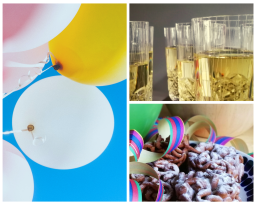Poison Information Centers Easter and May Day
In springtime we celebrate Easter and decorate our homes with traditional yellow flowers, willow branches in bud, and grow Easter grass. The Poison Information Center receives plenty of calls concerning poisonous plants during Easter. May Day festivities mainly evoke questions about alcohol and balloons.

Daffodil, tulip and hyacinth
The entire plant, especially the bulb is slightly poisonous and eating it may cause mild gastrointestinal symptoms (such as nausea). Rinsing the mouth is enough if tasted.
Chrysanthemum, Easter cactus and willow branches
The plant is non-toxic. Does not require treatment.
Ryegrass
The most common homegrown Easter grass is usually ryegrass (Lolium). It is slightly poisonous, but it is not known to cause symptoms in humans. Eating small amounts of ryegrass or ryegrass seeds does not require treatment.
Easter egg wrappers (aluminium foil)
A single dose is considered harmless. Does not require treatment.

Foil-balloons, serpentine, face paints
Balloons, serpentine streamers, and any dye coming off them, as well as face paints, are harmless.
Helium-balloons
Inhaled in small amounts, helium gas is not considered dangerous. In addition to a high-pitched voice, inhaling helium gas may cause symptoms such as headache and dizziness. These are caused by hypoxia resulting from the helium gas displacing oxygen.
Alcoholic beverages
Even a small amount of strong alcohol can cause alcohol poisoning in a small child.
Sima
Sima may contain some ethanol (usually less than 1%). A small amount of sima is not dangerous even to small children.